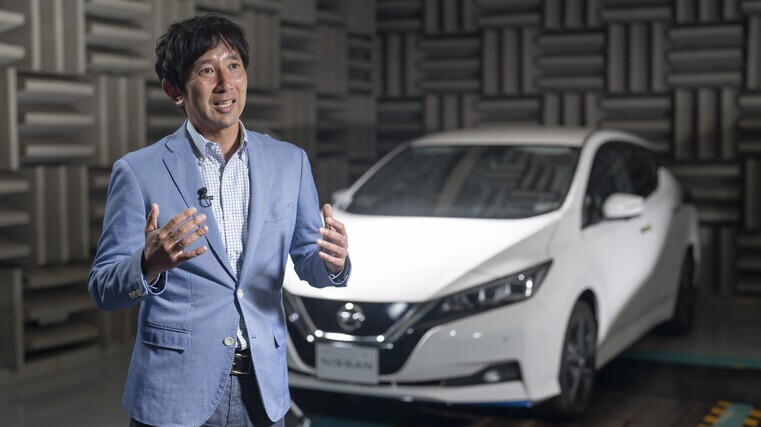Car paint keeping it cool

Nissan has been trialling an innovative automotive paint aimed at helping lower a vehicle’s ambient cabin temperature in summer and reduce the energy usage of the air-conditioning system.
Developed in partnership with Radi-Cool, a specialist in radiative cooling products, the paint incorporates metamaterial, synthetic composite materials with structures that exhibit properties not usually found in nature.
In November 2023, Nissan began a 12-month feasibility trial at Tokyo International Air Terminal at Haneda in collaboration with Japan Airport Terminal Co Ltd, Radi-Cool Japan, and All Nippon Airways airport services.
The project has involved cool paint being applied to a Nissan NV100 service vehicle operated by All Nippon Airways airport services.
With its large, open tarmac, Haneda airport was considered an ideal environment for a real-world evaluation of the paint’s performance in a high-temperature environment.
Nissan says although it is still in the testing phase, the results so far have been impressive.
Parked side by side under the sun, a vehicle treated in Nissan’s cool paint has shown yields of up to a 12C reduction in exterior surface temperatures and up to 5C cooler interior, compared with a vehicle featuring traditional automotive paint.
The marque notes the paint’s cooling performance is particularly noticeable when a vehicle is parked in the sun for an extended period.
A cooler cabin is not only more pleasant to enter, but also requires less air-conditioning run-time to cool the inside of the vehicle.
The metamaterial embedded within Nissan’s cool paint features two microstructure particles that react to light. One particle reflects near-infrared rays in the sunlight that would typically cause molecular-level vibrations within the resin of traditional paint to produce heat.
The second particle creates electromagnetic waves, that counteract the sun’s rays, redirecting the energy away from the vehicle into the atmosphere.
Combined, the particles in Nissan’s cool paint reduce the transfer of heat into surfaces such as the roof, bonnet, doors and panels.
Dr Susumu Miura, senior manager and expert at the Advanced Materials and Processing Laboratory, Nissan Research Centre, is leading the project.
“My dream is to create cooler cars without consuming energy,” he explains. “This is especially important in the EV era, where the load from running air-conditioning in summer can have a sizable impact on the state of charge.”
While radiant cooling paint isn’t new, it is typically used for buildings and structures and is often thick and requires application by a paint roller.
Among the challenges Miura, pictured, had to consider when developing an automotive version was to ensure it could incorporate a clear topcoat, be applied via a spray gun and meet Nissan’s internal standards for paint quality.
Since commencing the development in 2021, Miura and his team have tested more than 100 samples, and are currently evaluating a thickness of 120 microns, approximately six times thicker than typical automotive paint.
They have confirmed resistance to salt and chipping, peeling, scratches, chemical reactions, along with colour consistency and repairability. As development progresses, Miura and his team continue to explore thinner options that deliver the same level of cooling performance.





